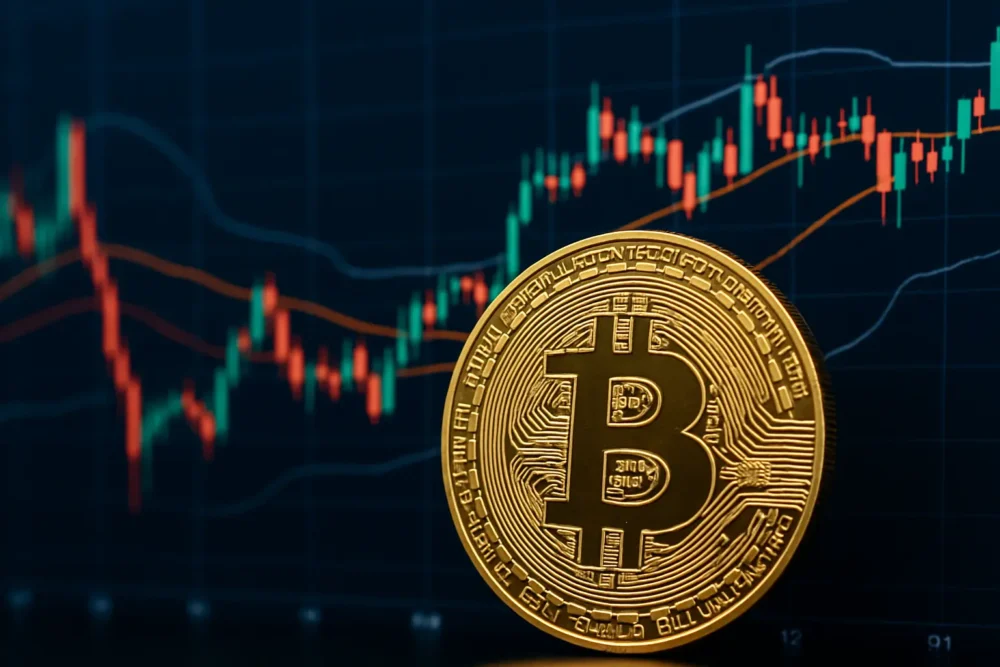Bitcoin’s ($BTC) position as the leading cryptocurrency has strengthened significantly, with its market share reaching levels not seen in over three years.
On-chain analytics firm, CryptoQuant, recently reported that Bitcoin now controls a much larger portion of the overall cryptocurrency market.
Its market share has soared to about 78.5%, a remarkable achievement compared to Ethereum, which is the second-largest cryptocurrency.
This significant increase reflects a growing demand for Bitcoin among investors, even as the broader cryptocurrency market remains unpredictable.
Speculation fuels Bitcoin’s rise
Bitcoin’s increasing dominance began in late 2022, primarily driven by speculation around a spot Bitcoin exchange-traded fund (ETF).
Investors were eager about the possibility of this ETF, and when it was approved in January, it led to a surge in investments in Bitcoin.
Although Ethereum also has a spot ETF, it hasn’t generated the same level of excitement or investment.
CryptoQuant suggests that for Ethereum to catch up with Bitcoin’s dominance, something significant, like the Initial Coin Offering (ICO) boom in 2021, would need to happen again.
Right now, Bitcoin’s growing market share indicates that investors have more faith in its long-term value, especially as other cryptocurrencies, known as altcoins, struggle to keep up.
Miner reserves reach high levels
In another development, Bitcoin miner reserves have climbed to their highest point in two years.
This increase in reserves has raised concerns about a possible drop in Bitcoin’s price.
CryptoQuant’s latest report shows that these reserves have risen to 368,000 $BTC, which is worth about $22.36 billion.
Historically, when miner reserves reach such high levels, it often signals that a downturn in the cryptocurrency market could be coming.
The report also points out that Bitcoin reserves on over-the-counter (OTC) desks have grown by more than 70% in the last three months.
This sharp increase suggests that miners might be getting ready to sell large amounts of Bitcoin, which could push the market price down.
Mixed signals in the market
Despite the concerns about a potential sell-off by miners, there are other factors that might balance out the market.
For instance, there has been a noticeable decrease in the amount of Bitcoin available on exchanges. This suggests that some investors are choosing to hold onto their Bitcoin for the long term, rather than sell it.
Additionally, large holders of Bitcoin, often called “whales”, have accumulated around 94,700 $BTC over the past six weeks.
This accumulation shows that these major players still believe in Bitcoin’s long-term value, even though there are short-term uncertainties.
The surge in miner reserves is happening at a challenging time for Bitcoin miners. Rising operational costs and reduced rewards, which followed Bitcoin’s halving event in April, have put pressure on miners’ profit margins.
With the cost to mine a single Bitcoin now estimated at around $72,224, and Bitcoin trading at approximately $60,797, many miners are facing losses.
This financial strain could push more miners to sell their reserves, potentially leading to further drops in Bitcoin’s price.
However, some economic factors could help offset the impact of miner sell-offs. For example, the US Federal Reserve has hinted at potential interest rate cuts in September.
Lower interest rates usually make borrowing cheaper and reduce returns on traditional savings, which can lead investors to seek higher returns in riskier assets like cryptocurrencies.
This could increase demand for Bitcoin, helping to counterbalance the selling pressure from miners.
A significant sell-off by miners could trigger a drop in Bitcoin’s price, but other market dynamics might soften the blow.
While the potential for a price decline exists, ongoing confidence from whales and possible interest rate cuts could offer some support, leading to a more nuanced and less straightforward future for Bitcoin’s value in the coming months.

